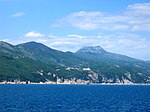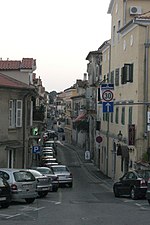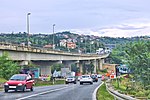Učka Tunnel

The Učka Tunnel (Croatian: Tunel Učka) is a toll tunnel on the A8 motorway in Croatia, under the Učka mountain range, as part of the Istrian Y network in Istria owned and operated by BINA Istra (owning the highway in a concession from 1995 to 2027). At 9.1 meters (30 ft) wide and 5,062 m (16,608 ft) long, it is the third longest in Croatia after the Mala Kapela and Sveti Rok tunnels. The tunnel consists of a single tube (although another is under construction), with two traffic lanes operating in opposite directions. Construction on the existing tunnel tube began in 1978 and it was opened for traffic on September 27, 1981. The toll is part of the rest of the closed toll collection system in use on the Istrian Y. The shortest possible journey through it costs EUR 4,50 for a class I vehicle. It is rated Class D/E under the ADR treaty for hazardous materials transportation, and vehicles transporting restricted goods must be pre-arranged and escorted. It is the only suitable road between Istria and the rest of Croatia for vehicles over 5 tonnes. In 2022 more than 1.94 million vehicles passed through with AADT of 5,326 and ASDT of 7,361.
Excerpt from the Wikipedia article Učka Tunnel (License: CC BY-SA 3.0, Authors, Images).Učka Tunnel
Učka Tunnel, Općina Lupoglav
Geographical coordinates (GPS) Address External links Nearby Places Show on map
Geographical coordinates (GPS)
| Latitude | Longitude |
|---|---|
| N 45.313333333333 ° | E 14.214166666667 ° |
Address
Tunel Učka
Učka Tunnel
Općina Lupoglav
Croatia
Open on Google Maps









